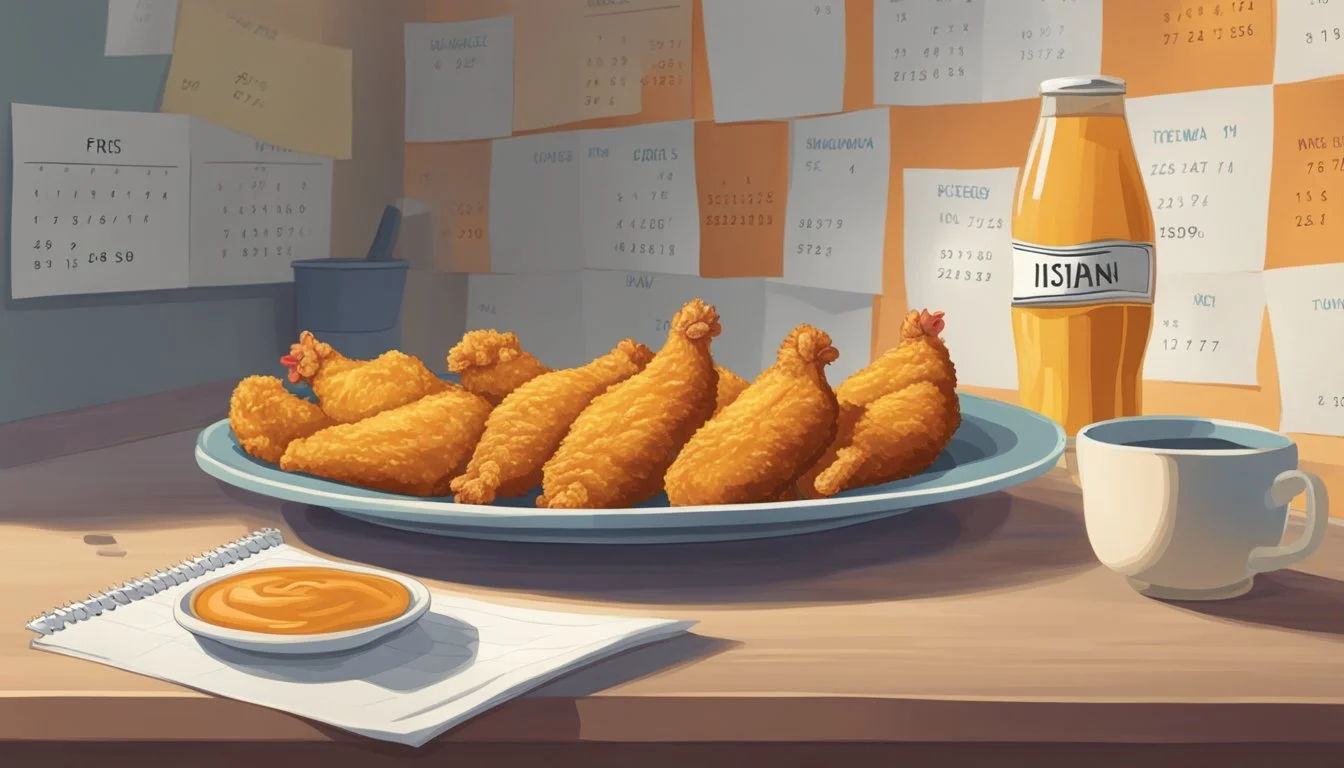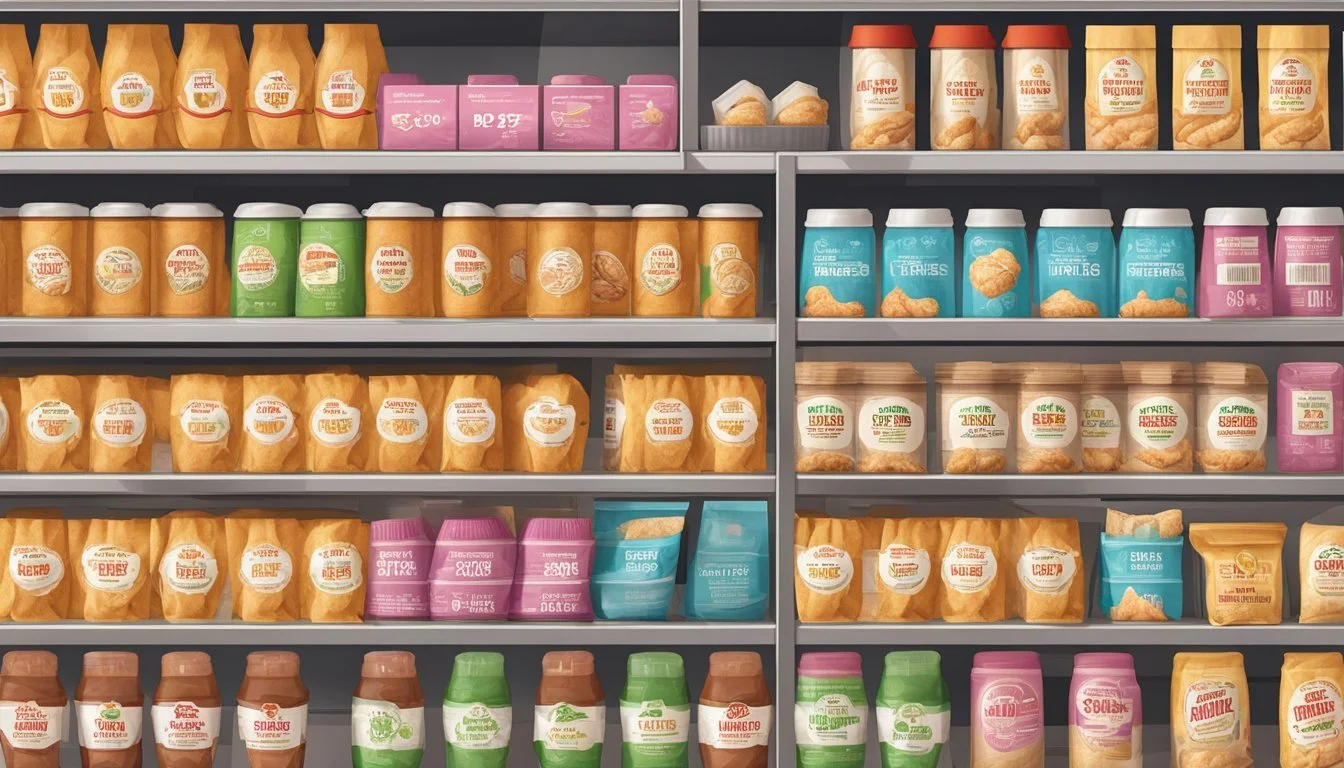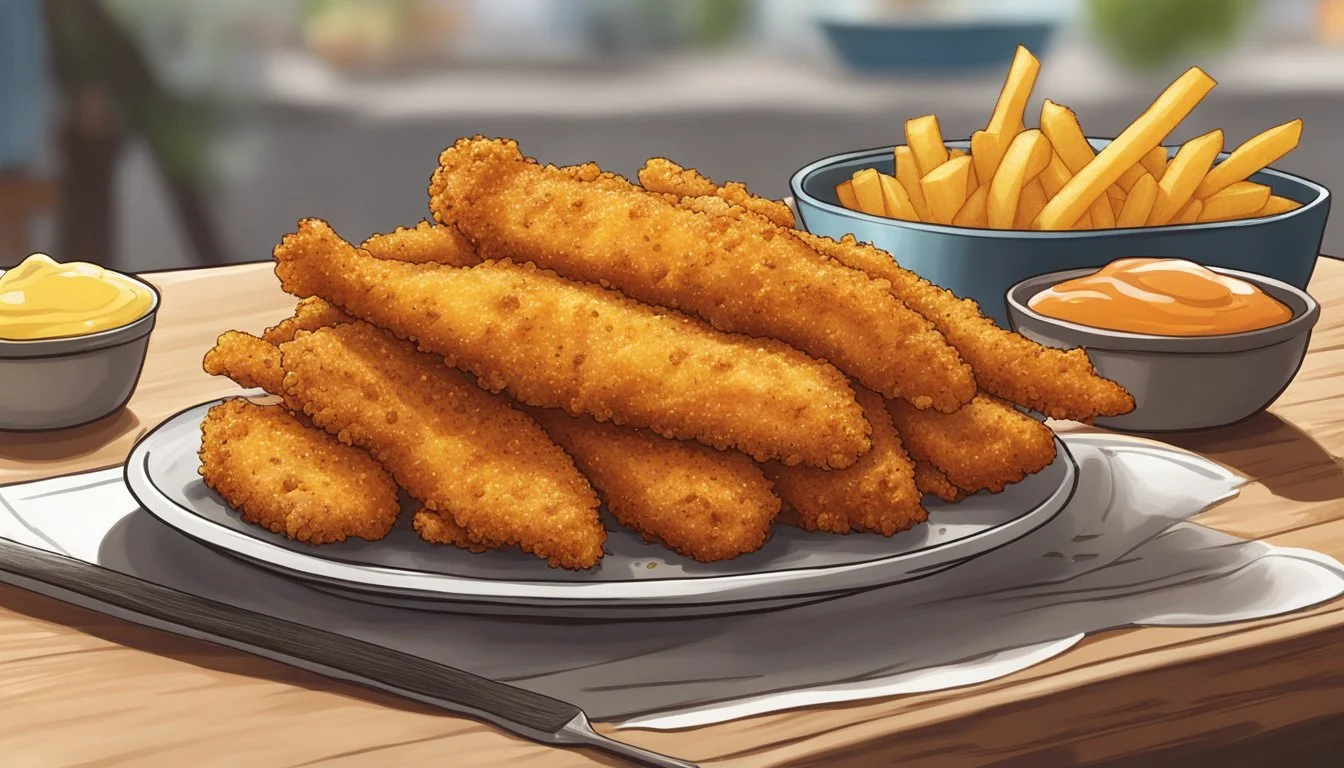How Long Do Chicken Fries Last?
Storage Tips and Shelf Life Explained
When it comes to the shelf life of chicken fries, the safety and quality of your food are paramount. Chicken fries, like other cooked chicken products, require proper storage to maximize freshness. Refrigerated chicken fries can last for 3 to 4 days if stored at or below 40°F.
Proper storage techniques can extend the viability of chicken fries. Sealing them in airtight containers or wrapping them tightly in aluminum foil or plastic wrap reduces exposure to air and moisture, which can speed up spoilage. It's also crucial to store them promptly after cooking to limit exposure to bacteria.
Keeping chicken fries in the freezer extends their shelf life significantly. When frozen at 0°F, they can last up to four months while maintaining quality. This makes freezing an excellent option for those looking to prepare meals in advance or preserve leftovers for future enjoyment.
Understanding Chicken Fries
Chicken fries, a popular comfort food, can be made using various types of chicken and coatings to achieve different textures and flavors. They are often served as appetizers or snacks.
Types of Chicken Used
Chicken fries can be prepared using chicken breasts, thighs, or drumsticks.
Chicken breasts provide a leaner option, offering a mild flavor and firmer texture.
Thighs and drumsticks, being darker meat, are more flavorful and have a juicier texture. Ground chicken is another alternative that can be shaped into consistent fry-like pieces.
The choice of chicken affects not only the flavor but also the cooking time and texture.
Using ground chicken can result in a more uniform product that may better hold various coatings.
Coating and Preparation
The coating is crucial in defining the final taste and texture of chicken fries.
Common coatings include breadcrumbs, panko, and batter. Breadcrumbs provide a traditional, slightly crunchy finish, while panko offers a lighter, crispier texture.
Battered chicken fries have a more substantial, crunchy exterior.
Preparation methods may involve seasoning the chicken with spices or marinating it before coating to enhance flavor.
Different cooking techniques, such as frying or baking, also influence the final product.
Baking might be chosen for a healthier option, while frying typically gives a crisper result.
Common Serving Suggestions
Chicken fries are often served with a variety of dipping sauces, including ranch, barbecue, and honey mustard.
They can be paired with french fries, salads, or coleslaw for a complete meal. This versatile dish is popular at family gatherings and parties due to its simplicity and widespread appeal.
Some recipes even suggest serving them in wraps or sandwiches to offer variety.
Using different spices and herbs in the coating can tailor the dish to various tastes, making chicken fries a customizable and beloved comfort food.
Storage Recommendations
Proper storage of chicken fries is essential to maintain their freshness and safety. Key practices include refrigeration, freezing, and the use of airtight containers and appropriate wrapping methods.
Refrigeration Best Practices
Chicken fries should be stored in the refrigerator at or below 40°F (4°C). Unbreaded chicken fries typically last 2-3 days, while breaded chicken fries can last 3-4 days.
Place the chicken fries in a shallow container to ensure even cooling. Arrange them in a single layer if possible to avoid clumping, which can lead to uneven temperature distribution.
Keep an eye out for any signs of spoilage such as off-smells, sliminess, or discoloration. When in doubt, it’s safer to discard questionable chicken fries to prevent foodborne illness.
Freezing for Longevity
Freezing chicken fries is an excellent method for long-term storage. When properly stored, chicken fries can last up to four months in the freezer.
Ensure the chicken fries are completely cool before freezing to prevent ice crystals from forming. Wrap each portion tightly with plastic wrap or aluminum foil. Place the wrapped pieces in an airtight container or heavy-duty freezer bag.
Label the container with the date of storage to keep track of its freshness. To reheat, use an oven for the best texture, as microwaving can result in sogginess.
Airtight Containers and Wrapping
Using airtight containers and proper wrapping techniques are crucial to extending the shelf life of chicken fries. Airtight containers help prevent moisture and air from compromising the quality.
When refrigeration is needed, transfer chicken fries to a shallow container and secure the lid. If an airtight container is not available, tightly wrap the chicken fries in plastic wrap or aluminum foil.
For freezing, double wrapping can further protect against freezer burn. First, wrap the chicken fries in plastic wrap, then follow with a layer of heavy-duty aluminum foil. This method locks in freshness and ensures the chicken fries stay safe for consumption.
Shelf Life Determinants
The shelf life of chicken fries is influenced by several factors, including storage temperature, preparation methods, and signs of spoilage. Each of these determinants plays a crucial role in ensuring food safety and quality.
Impact of Temperature on Shelf Life
Temperature significantly affects the shelf life of chicken fries. Refrigerated chicken fries should be stored at 40°F (4°C) or lower. At this temperature, bacterial growth slows down, extending the freshness.
If left at room temperature (above 40°F), chicken fries become susceptible to bacterial contamination, reducing shelf life to just a few hours. Freezing chicken fries at 0°F (-18°C) or below can extend their lifespan to several months by halting bacterial growth.
Signs of Spoilage
Recognizing spoilage signs in chicken fries is essential for food safety. Smell is a primary indicator; spoiled chicken fries often emit a sour or rancid odor.
Texture changes, such as becoming slimy or excessively dry, are also signs. Color alteration, like a grayish hue, points to spoilage. If the chicken fries have exceeded their sell-by date, they should be inspected carefully for these spoilage signs before consumption.
Role of Preparation in Spoilage
How chicken fries are prepared impacts spoilage rates. Cooked chicken fries last longer than raw chicken due to the high temperatures used in cooking, which kill harmful bacteria.
Proper handling and cooking techniques limit contamination risks. For instance, thorough cooking and immediate refrigeration post-preparation help in maintaining the sell-by date longevity and delaying spoilage.
Careful consideration of these factors helps ensure chicken fries stay fresh and safe for consumption.
Safety Guidelines
Proper handling and storage of chicken fries are crucial to ensure safety and avoid foodborne illnesses. Follow these guidelines to minimize risks and maintain quality.
Avoiding Bacterial Growth
Chicken fries can become contaminated with bacteria like Salmonella and Campylobacter if not handled or stored correctly.
Store chicken fries in the fridge at or below 40°F (4°C) to slow bacterial growth. Ensure they are cooled to this temperature within two hours of cooking. Use airtight containers or wrapping to prevent cross-contamination with other foods.
Regularly check the fridge temperature and keep raw and cooked foods separated. Always thaw frozen chicken fries in the fridge and never on the counter to minimize bacterial growth.
USDA Recommendations
The USDA provides strict guidelines for the safe storage of cooked poultry products. Chicken fries should be refrigerated within two hours of cooking and consumed within 3-4 days.
Reheat leftovers to an internal temperature of 165°F (74°C) before eating. Use a food thermometer to ensure accuracy. Follow proper hygiene practices in the kitchen to prevent cross-contamination by washing hands and using clean utensils and surfaces.
Refer to FoodSafety.gov for the latest updates and detailed guidelines on food safety practices.
Recognizing Unsafe Chicken Fries
Inspect chicken fries for signs of spoilage before consumption. Common signs include mold, a slimy texture, and an off or sour smell. Discard any chicken fries that exhibit these symptoms.
Pay attention to the texture and color. Chicken fries should be firm and not sticky or overly soft. If in doubt, it is better to discard questionable food.
Consuming spoiled chicken fries can lead to symptoms of foodborne illness, such as nausea, vomiting, diarrhea, and fever. Always prioritize safety to avoid health risks.
Proper Handling and Usage
Ensuring that chicken fries are handled properly from thawing to leftover usage is crucial to maintaining their safety and flavor. Pay close attention to safe thawing and reheating methods, discarding any expired chicken fries, and making use of leftovers efficiently.
Thawing and Reheating Techniques
Chicken fries can be thawed in various safe methods, including overnight in the refrigerator or using the defrost setting on a microwave. Thawing in the refrigerator is recommended to avoid bacterial growth.
Reheat chicken fries in an oven preheated to 350°F (175°C) until they reach an internal temperature of 165°F (74°C). This ensures that the fried chicken retains its crispness and avoids food poisoning. Microwaving is also an option but might result in slightly soggy fries due to uneven heating.
Using a proper technique to reheat helps maintain the texture and taste, preventing freezer burn and ensuring safe consumption.
Discarding Expired Chicken Fries
Chicken fries should be stored in a refrigerator at 40°F (4°C) or less and eaten within 3-4 days. If stored in the freezer, they can last up to two months but should be discarded if any signs of freezer burn appear on the surface.
Check for any changes in smell, color, or texture before consuming refrigerated chicken fries. Discard them immediately if they exhibit off-odors or sliminess, as these indicate bacterial growth.
Proper storage and timely disposal of expired chicken fries are key to avoiding foodborne illnesses.
Utilizing Leftovers
Leftover chicken fries can be creatively repurposed. They can be chopped and added to chicken salad for extra crunch or included in wraps and sandwiches. Additionally, chicken fries can enhance chicken nuggets by providing a savory flavor and satisfying bite.
When handling leftovers, ensure they are reheated to the appropriate temperature and consume them within the recommended storage timeframe. This ensures that leftover chicken remains both safe to eat and delicious.
Combining leftovers with fresh ingredients from the grocery store can also create new meals, reducing food waste and providing variety.
Enhancing Chicken Fries
Experimenting with unique recipes and complementing your chicken fries with ideal accompaniments can elevate this dish to new heights. Explore fresh and exciting ways to add flair and flavor to your chicken fries.
Creative Recipe Ideas
Chicken Parmesan Fries: Coat chicken strips in a mixture of panko breadcrumbs and Parmesan cheese. Bake until crispy, then top with marinara sauce and melted mozzarella.
Buffalo Chicken Fries: Toss crispy chicken fries in hot sauce and melted butter. Serve with a side of blue cheese dressing.
Asian Fusion Fries: Marinate chicken parts in a soy-teriyaki blend. Coat in a sesame seed breading and bake. Serve with a side of sweet chili sauce.
Ideal Accompaniments and Toppings
Dipping Sauces: Pair chicken fries with an array of dipping sauces. Suggestions: Honey mustard, BBQ, ranch, hot sauce, or a blend of sriracha and mayonnaise.
Side Dishes: Complement chicken fries with tasty side dishes. Options: Fresh coleslaw, seasoned sweet potato fries, or a mixed green salad.
Toppings: Enhance chicken fries with delicious toppings. Ideas: Melted cheese, crumbled bacon, sliced green onions, or drizzled with ranch dressing.
With these creative recipes and complementary accompaniments, chicken fries can become a flavorful centerpiece for any meal.







